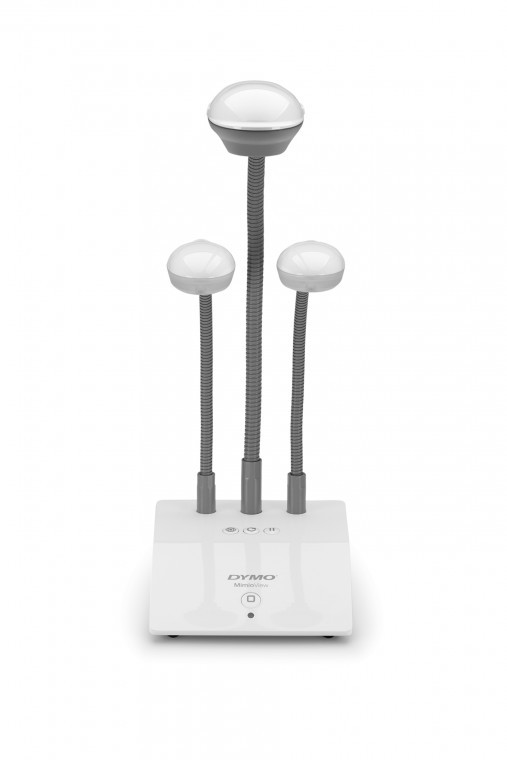Sewanhaka High School art chairperson Ryan Lundergan believes the MimioTeach interactive system, which makes a white board interactive, could change how art is taught in the district.
“For us instructionally this is probably going to revolutionize how we teach art to our students,” Lundergan said. “Even though art is already an interactive subject area, this is really going to allow us to bring students to the board and give them an experience at a whole other level. It’s going to help those shy students who don’t like to interact by helping to bring out that inhibition by giving them more options.”
Sewanhaka High is one of 10 schools that recently won a DYMO/Mimio jump-start grant, which provided the school with the MimioTeach system. The system includes a MimioPad, which allows users to interact with the MimioTeach whiteboard from anywhere in the classroom, and a MimioView document camera that features simple plug-and-play integration with the other devices.
“It is your computer projected on a light board,” Lundergan said. “Another great feature is you can take notes on the whiteboard, catalog and print them out right there.”
Lundergan said this allows for students who may have missed the class, to be provided with an exact copy of the lesson’s notes. It also allows for students who need more visual aids to have a printed copy of the lesson.
The MimioTeach interactive system uses a portable bar that can be magnetically attached to any white board, and comes equipped with a style pen. The device connects the whiteboard to a computer through a wireless USB hub attached to a computer. The whiteboard then is fully interactive, allowing teachers to write on the white board while not leaving any marks on the whiteboard itself.
The Mimioview document camera features state-of-the-art optics with two adjustable LED light sources. It requires only one cord that connects to a computer and displays the images on the MimioTeach-enabled whiteboard.
“We have a drawing and painting teacher who uses it for demonstrations,” Lundergan said. “Instead of everyone crowding around one table, the display is on the white board, and its easier for her then walking to each table. We are also able to display items that we may not find on the internet, and just display them under the camera for everyone to see. Or say the teacher wants to demonstrate a certain technique, she is able to do it under the camera for everyone to see in clear detail.”
Lundergan said the MimioPad will also be utilized as it connects with the MimioTeach system, allowing for the teacher to pause a lesson plan, and let a student work out the problem on the MimioPad.
DYMO is the master brand name for the Newell Rubbermaid Global Technology Solutions portfolio. Mimio began in 1997 to “make learning more engaging for students, with technology that makes it easier for teachers to do what they do best – teach,” according to their website.
Lundergan said he heard about DYMO/Mimio jump-start grant from a fellow colleague while taking administrative courses. Lundergan spoke with fellow art teacher Allison Gallacher and they both agreed to try for the grant in case the funds for a less up-to-date- system didn’t come through.
The grant required a lesson plan idea, and Lundergan said he and Gallacher “went above and beyond” that and explained how the Mimio products would “transcend” the art department.
“We wrote it up for the art department, and we segued into lesson plans on how we could use it in art history, use the camera for painting demonstrations, and show areas of the world through Google Earth,” Lundergan said. “We showed that we could have the kids in the ninth grade art studio class come up to the board and interact with it. We ran through a gauntlet of ideas and showed such a broad spectrum of how the students could use the product.”
Before Lundergan had been informed they won the grant, he tried to get additional funds and was told by the principal that the money was just not there.
“We were told we weren’t getting the fundsm and found out a few days later we had won the grant,” Lundergan said. “It was a roller coaster week for us.”
Students have only been using the new system for a week, and Lundergan said the they will have to see how the program works out.
“We are going to try and nail down some of our ideas,” Lundergan said. It’s a slow process but we will work it out.”
Some districts have been using smart boards to help make programs more interactive, but the problem with those Lundergan says is that the are boards aren’t very mobile and can’t be written on.
“Smart Boards are big boards that inhibit our drawing ability,” Lundergan said. “The Mimio products are small and the flexibility provides exactly what we need, because it attaches to our white boards and we can draw on it. “We can pre-load the software into other computers and just move around the Mimio devices when needed.”
Reach reporter Timothy Meyer by e-mail at meyerj.tim@gmail.com.



